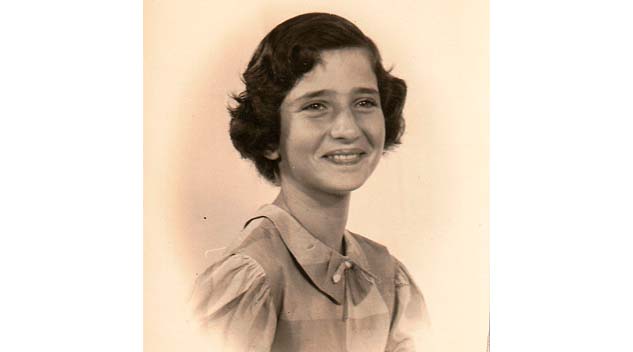#Blanche #Greenstein #Textile #Antiques #Dealer #Antiques #Arts #Weekly
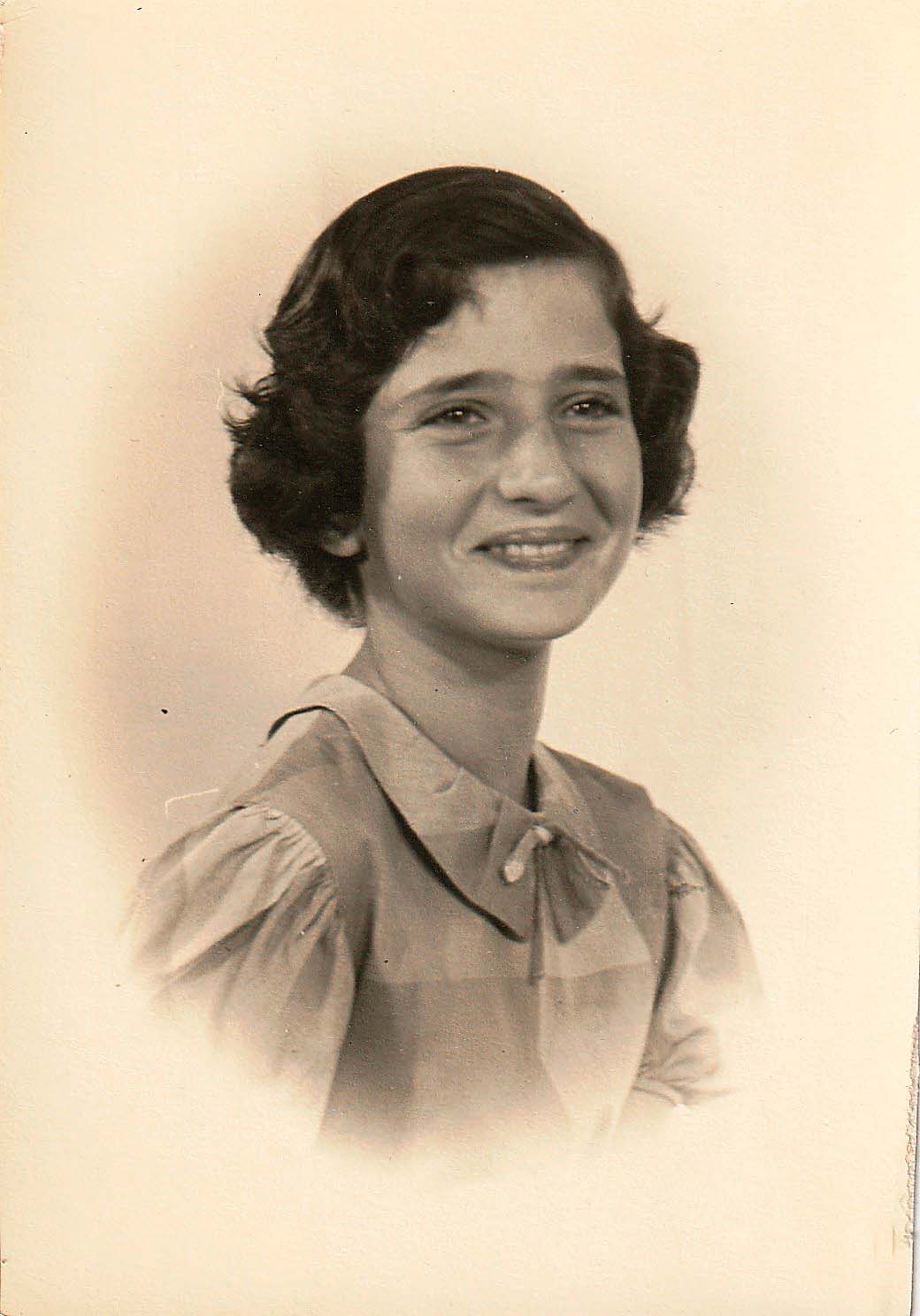
Blanche in the Bronx.
NEW YORK CITY — On Saturday, October 14, Blanche Grace Greenstein passed away in her home in New York City, from complications of pulmonary fibrosis. She was 84 years old.
Blanche was born in the Bronx, N.Y., on February 25, 1939, to Benjamin and Libby Greenstein. In 1952, her parents began making tin boxes under the name Daher Limited; the name of the company changed to The Tin Box Company of America in 1980. She was one of 400 girls in New York City to be accepted into Hunter High School and commuted daily from her parents’ home in the Bronx. After graduating from NYU, she went to work as a stylist for photographers and TV advertisement producers.
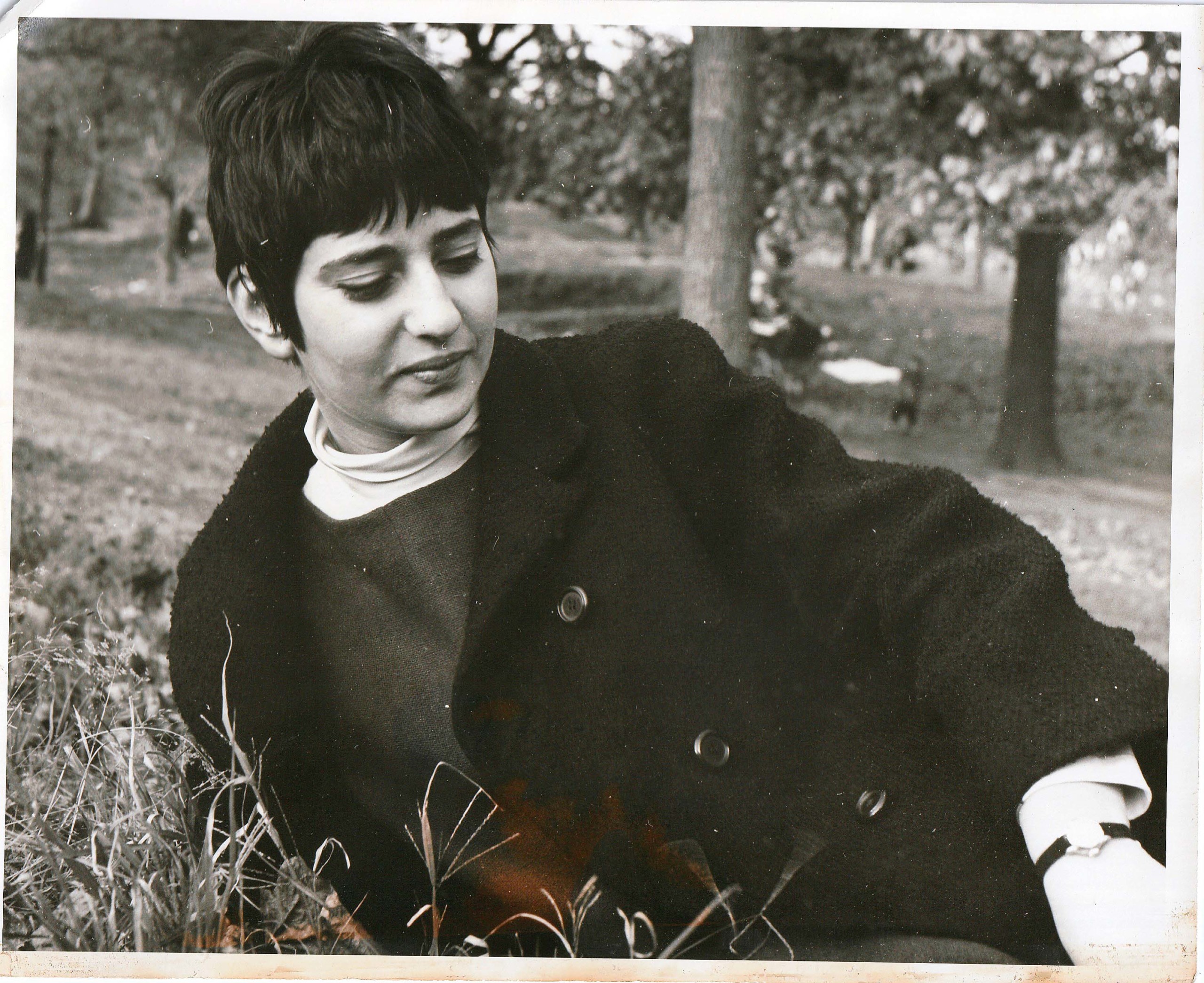
Blanche on a stylist photo shoot in Central Park.
She met her lifelong friend, companion and business partner Tom Woodard when the two briefly overlapped in group therapy. Woodard, who grew up in Des Moines, Iowa, came to New York City to be in the theater and worked for Joseph Papp as box office treasurer for the Public Theater. She was always involved in the visual arts and Woodard believes that her interest and “great eye” for antiques were inherited from her mother, who could walk into an antiques store and instinctively gravitate towards things that were of exceptional quality.
Before beginning their business in the early 1980s, Woodard recalled that on weekends, the two would drive to flea markets at 4 am to hunt for quilts. They started buying them and selling them to dealers.

Blanche and Tom shopping for garden furnishings in the UK.
“We knew all the people in the business and learned from the ground up,” Woodard says. “We always tried to buy the best there was, even if we didn’t have a buyer in mind. One of the reasons we were successful early on is we were willing to pay the country dealers what or close to what they were asking. It was always more of a pleasure and hobby than anything else. We didn’t like to haggle. That made us very well liked.”
“I remember going to an antiques store in the 1980s. At the time, most quilts were $30 or $40; the dealer was asking $175 for their quilt. I nearly fainted when Blanche said, ‘I’ll take it.’ She had an impeccable eye. Eventually, it became impractical for us to go out and spend money on a hotel, meals, etc; there wasn’t room to make much of a profit. So, in 1971, I went out and rented a shop on Lexington Avenue.”
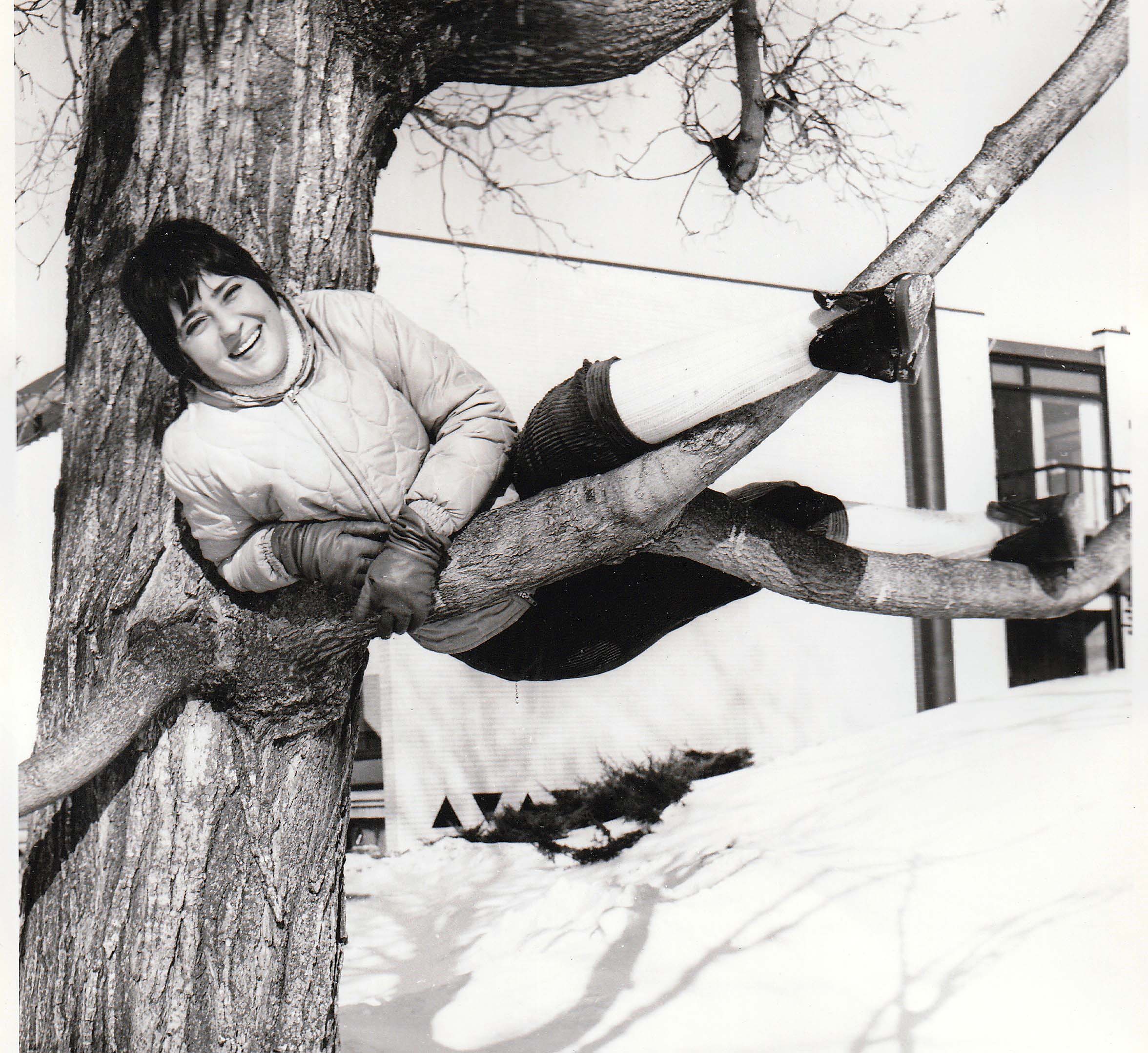
Blanche practicing tree-climbing at a ski lodge.
From humble beginnings, Woodard & Greenstein Antiques grew into a leading source for collectors of American quilts around the world, not just in the United States but in Canada, South America, Europe, Australia and Asia. The company’s first location was on the second floor of a building at 74th and Lexington, where they stayed for about seven years. They moved to a space on Madison Avenue, where they stayed for about 20 years. Their last shop was in what Woodard refers to as “a tiny store on 82nd Street, between First and Second Avenues, where we moved our focus towards online sales.”
Blanche and Tom had been longtime shoppers at flea markets in Salisbury, Conn., and the Russell Carrell flea markets, which they ultimately showed at. Woodard remembers the first show they did was the Albany, N.Y., show, which at the time was produced by Mildred Spargo.
“We loaded up, did the show and met a lot of great dealers we still know today. Eventually we did the American Folk Art Show and the prestigious Winter Antiques Show, which we did for 19 years. The New York Times antiques critic was very kind to us when we first started doing the Winter Show and said we were “the hit of the show.” We put quilts on sliding frames; it was very theatrical and an innovative way to look at quilts as real textile folk art.”

Blanche with a cat friend.
In 1979, Blanche and Tom were guest curators for the American Folk Art Museum’s exhibition, “Hawaiian Quilts: Treasures of an Island Folk Art,” which was the first exhibition of island quilts on the mainland US. “Divine Inspiration,” their gallery exhibition with Courcier Wilkins in 1985, was covered in the New York Times as the first significant collection of museum-quality Shaker furnishings sold in New York City since the 1960s.
Blanche co-authored three books with Woodard: Crib Quilts and Other Small Wonders (1981), The Poster Book of Quilts (1984), and 20th-Century Quilts 1900-1950 (1988).

Albert Sack and Blanche Greenstein. Photo courtesy Dianne Levison.
House Beautiful magazine, Country Living, Architectural Digest, Elle Décor, World of Interiors and the New York Times also documented architectural preservation projects the two embarked on. Among these were a Federal style post-and-beam house in Fall River, Mass., Nineteenth Century Vermont barns and other houses moved to and reassembled on the East End of Long Island.
In 1981, Blanche and Tom created Woodard Weaves Classic American Woven Rugs, which was inspired by increasingly hard-to-find antique American rugs. The rugs are made in India, the only place they could find hand looms. The two also created in 2004 a line of custom made reproduction hooked rugs.
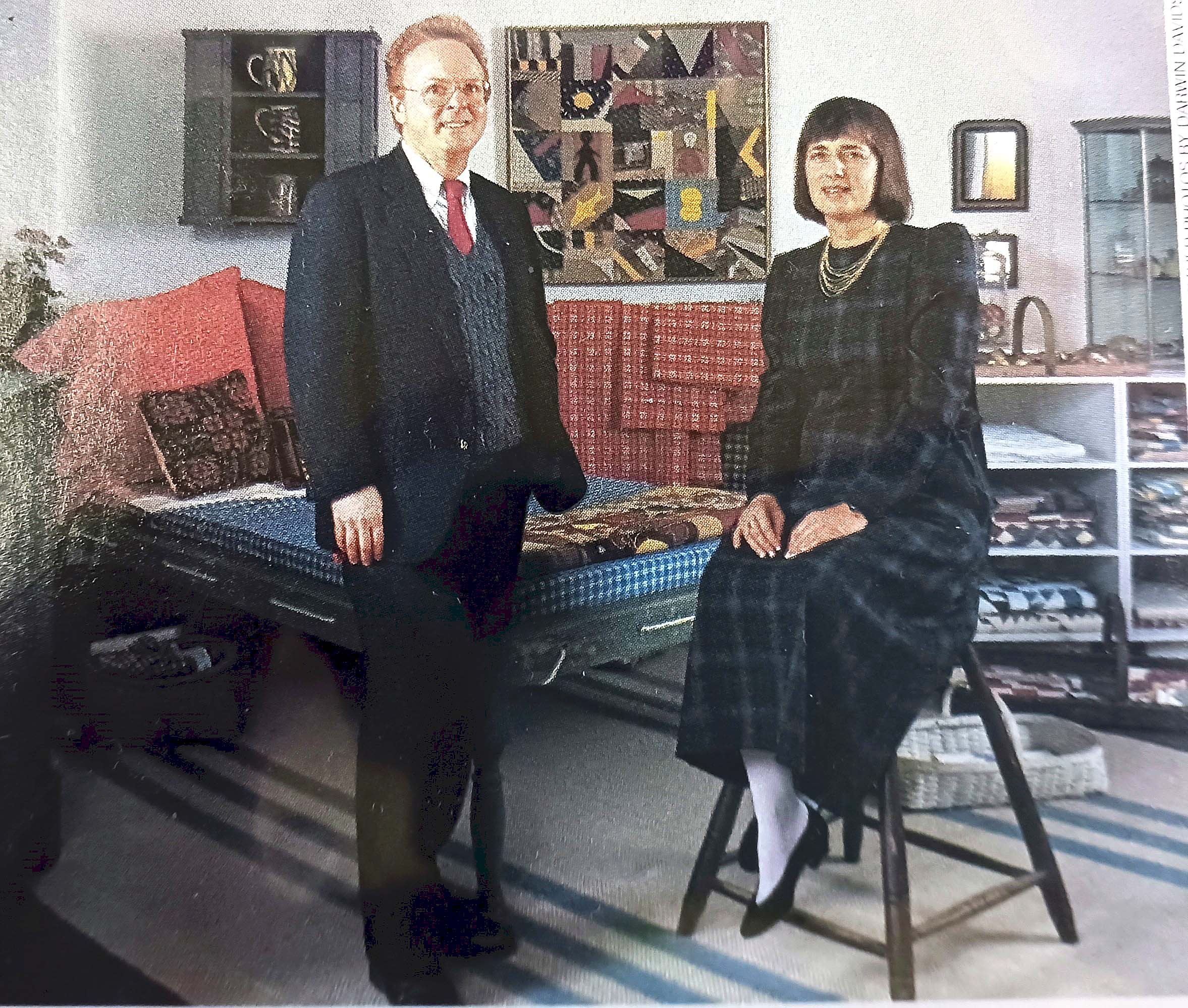
Tom Woodard and Blanche Greenstein.
Antique quilts from Woodard & Greenstein have made their way into institutional collections around the world, including the Museum of Fine Arts, Boston, the American Folk Art Museum, the Baltimore Museum of Art, the Dallas Museum of Art and the American Museum in Bath, England. Quilts were donated to the Peconic Land Trust and the US Friends of Art and Preservation in Embassies program.
Celebrity actors and authors were among their many clients. Some of the ones Woodard mentioned included Estee Lauder, Jackie Kennedy Onassis, Harrison Ford and Paul Simon. “She once asked Joan Fontaine for her ID,” he recalled with a laugh. “She was a keen reader and loved it when an author came in and bought something.”
Blanche is survived by her brother, Herman Greenstein of Vermont, cousins Pete Gelb and David Molk, and Thomas Woodard.

From left, cousin Peter Gelb, brother Herman Greenstein, Blanche Greenstein, Bronx, N.Y., 1940s.
A funeral service took place on Tuesday, October 17, at Frank E. Campbell’s Funeral Chapel on Madison Avenue; following the service, she was buried near her parents in a Queens, N.Y., cemetery.
“Blanche’s exquisite, unerring taste, along with her passion for American quilts and folk art, have set the bar very high. She has inspired us all to always seek the exceptional, when only the best will do. She was really loved by a lot of people At her funeral service, I said, ‘if you got Blanche, you got and loved her. Most people who met her loved her.’”
Donations in her memory can be made to: Gods Love We Deliver (www.glwd.org) or the United Jewish Appeal (www.uja.org). Memories for her family can be shared with the funeral home (www.frankecampbell.com).
In Memoriam: Blanche Greenstein (1939-2023)
One Bright and Beautiful White Flower in a garden of flowers – That was Blanche Greenstein!
I am so very blessed to have had Blanche as a wonderful friend all of these years and to now have the fabulous memories of the times we shared together to remember and cherish.
Blanche and Tom Woodard were icons in the field of American textiles and brought passion, beauty and importance to the field. Their booths at shows were spectacular and their shops were fabulous, inviting and so much fun to visit. They authored the beautiful book Crib Quilts and Other Small Wonders, which is a must for every collector of textiles.
Yes, life can be so beautiful and sweet and in an instant so very sad. Yes, I am so very sad but so very grateful that we in our “Antique World” are a wonderful family and at times like this we have each other to be there for one another and to share and cherish the memories of our dear friends.
I am sure Blanche Greenstein has been welcomed into and has joined our “Antiques Dealers Family Away From Home.” It’s a wonderful group that we will all forever miss.
Barb Pollack
Highland Park, Ill.
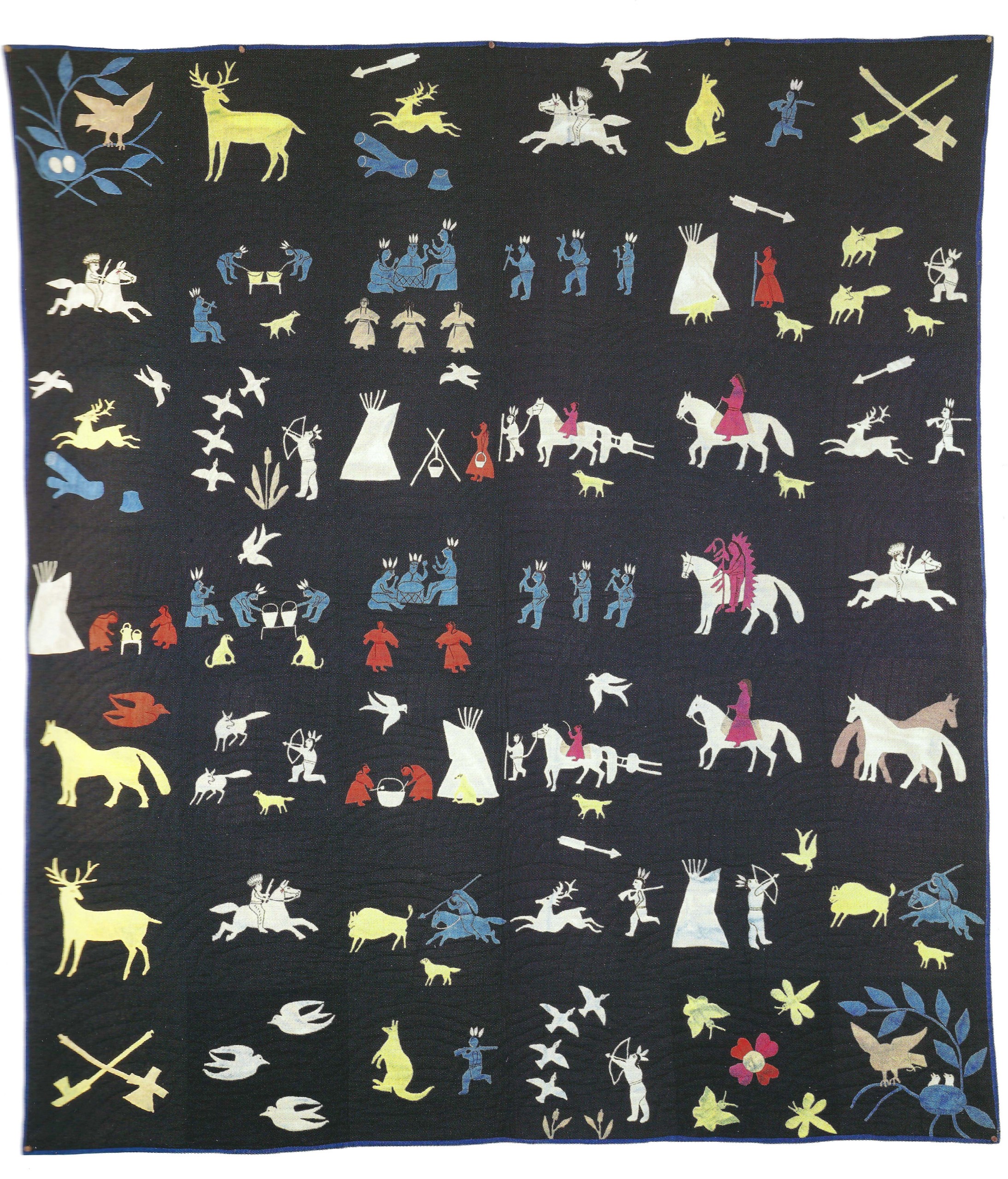
Pictorial quilt, Rebecca Blackhorse, South Dakota, circa 1900-10, cotton, hand-appliquéd and hand-quilted, 78 by 70 inches. Private collection. Photo courtesy of Joshua Baer & Company.
A woman of instinctively good taste with an incredible work ethic, our friend Blanche Greenstein was a dealer at the epicenter of the market in American Folk Art that came to maturity during the 1970s in New York City. Along with their primary competitors, Joel and Kate Kopp of America Hurrah, Blanche Greenstein and her partner Thomas K. Woodard, were instrumental in elevating American quilts and hooked rugs to the level of an art form, and in the process, advancing scholarship, connoisseurship and monetary value. Tom and Blanche always exhibited exquisite taste and presented their works beautifully displayed, in elegant yet comfortable settings. Their booths, particularly at the Winter Antiques Show, were always gorgeous and memorable. In addition to their renown textiles, they handled a wide array of superior American antiques that included painted furniture, Windsor chairs, folk paintings, weathervanes, Shaker, stoneware, pottery, garden furnishings and some English and European folk art. During my early years as a dealer, in my teens, I sold some very special pieces to Tom and Blanche, and I was enormously proud that they became centerpieces in their booths.
My favorite memory of Blanche occurred when I was in my early 20s, and centers around a pieced cotton quilt with a pictographic motif and black background with an oral tradition to the Crow Creek Reservation in South Dakota, illustrated in color in the groundbreaking 1974 book, Quilts in America, by Patsy and Myron Orlofsky. I first saw this quilt in person at the opening night of the Winter Antiques Show in 1981 in the booth of Tom and Blanche, aka “Thos. K. Woodard.” The quilt was a knockout that literally stopped me in my tracks. I asked the price and was told it was “on hold” so I reluctantly moved on. Three years later, during a visit to their Madison Avenue gallery, I found myself flipping through a copy of The Quilt Engagement Calendar illustrating the Pictograph quilt and asked Blanche, “What ever happened to that quilt”? Her face slightly twisted, she said, “It’s in the closet” and explained that in 1981 when they offered the quilt for sale at the Winter Show, Jean Lipman had put a hold on it, hoping to display the quilt in her Arizona home, but it sadly did not fit the intended wall and the sale never went through. I asked Blanche if I could see the quilt, and it was brought out of storage, mounted on a 78-by-70-inch frame, folded in half. Seeing it again, up close in all its glory, my love of that quilt multiplied. We quickly arrived at a mutually advantageous deal, and I owned the quilt! Despite not having a wall for it, Jean Lipman also loved that quilt. It was featured as the frontispiece of the catalog for the exhibition, “Young America, A Folk Art History,” and was credited to me as the lender. In a funny way, history repeated itself, when, in 1989, the Santa Fe dealer Joshua Baer visited our gallery, then located in New York City. Baer, a renowned authority on Native American Art and weavings asked if I still owned the Pictograph quilt, and would I consider selling it. While it was no longer folded up in a storage closet but hanging on the wall of my home office in Connecticut, I felt strongly that the quilt deserved to be seen and appreciated. I gave Josh a price and he bought it on the spot. Baer featured the quilt as the cover illustration of the catalog for his next exhibition, “Twelve Classics,” but more importantly he identified the maker of the quilt: Rebecca Blackhorse or Blackwater, a Lakota Sioux from South Dakota, where it was made circa 1915. I last saw the quilt hanging on the wall of the Metropolitan Museum of Art in the 2015-16 exhibition, “The Plains Indians: Artists of Earth and Sky.” This is just one example of an extraordinary number of remarkable works (many by women artists) that passed through the hands of Blanche Greenstein.
David A. Schorsch
Woodbury, Conn.
Tom and Blanche were just terrific; their booths were always pitch perfect and they always had beautiful things that were pulled together so beautifully, it was not about just a single object or quilt, it was the whole environment they created around those objects. Their approach was unique – they saw the broader context of Americana and American folk art. The presented a constellation of things that represented what people love about Americana and American folk art. They had exquisite taste in how they exhibited and how they created an environment. Blanche had a wonderful, wry sense of humor; she and Tom were interesting and savvy people who were fun and interesting to be around and were much revered by colleagues and clients.
Nancy Druckman
New York City
In the middle of the Twentieth Century there was a reawakening of interest in American Folk Art. In New York City, Blanche Greenstein and Tom Woodard opened Woodard and Greenstein, one of several American quilt shops also in NYC. Quilt dealers and collectors soon reached from the New England states through Pennsylvania, Ohio, Indiana and Kentucky to California. Museum exhibitions, books and sales followed as interest in these American beauties grew. Museums displaying quilts ranged from coast to coast extending even to Japan and other foreign countries. Antiques dealer and collector, Blanche was one of the pioneers who taught us the history of American quilts and quilt making. She, along with so many others, showed us the beauty of these textile treasures and educated the American Folk Art community to realize the importance of American quilts to the understanding of American cultural history.
Helaine and Burt Fendelman
New York City
We knew her first on a business level but after a while we became close friends. We met her 50 years ago in Woodstock (Vt.); she would come up to buy things. She would be alone and, being from the big city, she was a little afraid to stay on her own up in the country. Even though my place was tiny, I told her, ‘You can stay in the kitchen if you like.’ The head of the bed was right by the oven, which was a gas stove and we laughed about that. When they were dealing in rag rugs, they’d buy quantities from us to copy the designs and were big customers of ours in the 80s and 90s. After she and Tom separated, she would come up here for Thanksgiving. We always enjoyed having her, she was a lot of fun to be with. She would tell me, ‘My mother made sweet potatoes with marshmallows for me,’ so I started to make those then, for her.
Stephen Corrigan
Rockingham, Vt.

Blanche’s beloved cat, Spenser, who now lives with Tom Woodard and his cats and dog.
When Ed and I were making our early forays into New York to scope out Americana in the city, three destinations topped the list: America Hurrah, Kelter-Malce, and Woodard & Greenstein (Thomas Woodard and Blanche Greenstein). Tom and Blanche were always warm and welcoming, and we became great admirers of their eye for both inventory as well as design, particularly when exhibiting at the Winter Antiques Show, well before we even hoped to participate. I’ll never forget the year they were offering the most wonderful and colorful collection of woven splint Woodlands baskets of a quality we had not yet experienced. We were hooked and have been seeking out and selling Native American basketry ever since.
As dealers, Tom and Blanche were best known for their expertise in the world of textiles, particularly quilts but also hooked and sewn rugs, and their annual quilt calendar was an eye-dazzling artwork. But they also handled marvelous examples of painted furniture and folk art accessories – all the things that we loved as well. Their house in the Hamptons was a design inspiration with its sophisticated and reserved Americana interiors and architecture and received well-deserved media attention.
And then came “Woodard Weave”! What a brilliant transition into the world of interior furnishings with a line of woven rugs based on early American designs that could be ordered in sizes to fit virtually any room. In my own interior design business, Bell-Guilmet Associates, we used their rugs more than once to wonderful effect and at Olde Hope we are still using one of our favorite patterns that we ordered for our final Winter Show booth in 2019. It will be in our booth at the upcoming Delaware Antiques Show as well.
Blanche was an inspiration, but she was also a friend, one I didn’t see often enough but who I always enjoyed when our paths would cross. She was sincere, warm, very smart and always had a laugh to share. She will always hold a special place in our hearts.
Pat Bell
New York City & New Hope, Penn.
When you took the elevator up to Thos. K Woodard: American Antiques and Quilts (more commonly known as “Woodard and Greenstein”) on East 74th Street in Manhattan, you were immediately struck by what made Blanche and Tom great dealers…great taste, a great eye for color and design, a commitment to buying the best, a wide-ranging appreciation of different esthetics, and a genius for display. As a team, they were also great businesspeople. They were scholars and innovators, organizing important exhibitions, publishing books, and lecturing to various organizations, always in furtherance of fostering an appreciation of American textile art.
When you took the elevator up to Blanche’s apartment a few blocks away on East 73rd Street, you were very much struck by a different, and perhaps truer, side of Blanche…a world of warmth and whimsy. Always greeted by three black and white cats of varying degrees of goofiness (different over the years, but always alike), you were again struck by Blanche’s delightful taste, by her attention to detail, but this time the predominant sense was of immense charm. She surrounded herself objects that were meaningful to her and made her smile… wonderful hooked rugs, silly stuffed animals, lots of delightful little things in warm colors. This after all was her home, meant only for her comfort and delight, intensely personal and not for show. This reflected her – a woman of great warmth and intelligence, an immensely caring person, a wonderful friend for whom personal relationships were extremely important, and yes, like many, a very funny, delightfully neurotic New Yorker who took many things seriously, but not herself.
We will miss you terribly.
Grace and Elliott Snyder
South Egremont, Mass.
I began working with my Dad in 1975, right out of college and, within a couple of years, he wanted me to choose an area within the general world of antiques in which to specialize. I felt I wanted to focus on work by women; at first it was quilts, by the early to mid-80s it became samplers. I first met Blanche in the late 70s at shows or on buying trips when quilts were really coming to be understood in significant ways.
Blanche and Tom were right in there, along with Kate and Joel Kopp at American Hurrah and Kelter Malce, introducing quilts to the folk art and modern art world.
Blanche and Tom were people I greatly admired early on for their strong knowledge and instinct; she, in particular, recognized the importance of quilts before most people did. I loved that she turned her interest to woven rugs, which are closely related to quilts, and something that could be manufactured and used in the home; I myself have bought and used Woodard Weave rugs.
I also loved that Blanche had a wonderful dry irreverent humor. Interactions with her were always great fun.
Amy Finkel
Philadelphia
We worked together quite a lot; she was a good friend of mine. I met her through Jesse Caldwell Leatherwood, who was my client and partner and after whom I named my business when he died. Before I moved to the United States, I was a picker and dealer in England and Europe; she and Tom would come to buy, and I would travel with them. We had the same kind of sense of humor and became very close. Jesse and I did the Winter Antiques Show for many years; both of our birthdays were in late January, a few days apart. I remember Blanche once walking a birthday cake for us into the show. When Jesse passed away, she was one of the people who came to see me.
She knew everyone in the business and introduced me to a lot of people including Deanne Levison, decorator Mariette Himes Gomez and clients Robert Mnuchin and Paul Tudor Jones. She had been ill for a long time and then there was Covid, so it had been a while since I’d seen her, but we spoke on the phone often.
Mo Wasjelfish
Sandwich, Mass.
I was introduced to Blanche in the 1970s when I entered the second story shop of Woodard and Greenstein. Both Blanche and Tom were so busy with customers, and others waiting in line, that when the phone kept ringing, I offered to answer it. This was the beginning of a decades-long friendship. Time with Blanche was always special. Her caustic, often self-deprecating sense of humor was countered by sincere love of her friends. These qualities kept us both entertained and sustained during times at the Winter Antiques Show, and many others. On a trip to Paris years ago, a mutual friend never let us forget that in all the grandeur there, Blanche and I managed to come home with only some old vintage buttons from the Marché.
Blanche was blessed with a great and interesting eye; she was a true professional in her field. Many collections are enjoyed today, and are better, because of her input. Blanche was a dear friend, an exceptional colleague, and a rare person.
Deanne Levison
Asheville, N.C.
It was in 1975 that I first walked into Tom and Blanche’s shop, then on the second floor at 73rd Street on Lexington Avenue. We discovered we were both doing the Houston show and decided to share a truck down there. I soon appreciated Blanche’s dry sense of humor. Afterwards they moved to the second floor on Madison Avenue, down the street from my shop. We both had houses out on Long Island in those days, I in Quogue and they in Wainscott, where they restored several houses over the years and furnished them with exquisite taste, beautifully.
Blanche was that rare antiques dealer who had incredibly good taste, a splendid eye and the ability to display it both effectively and beautifully. In addition, she was a very good businesswoman, something which many antique dealers are not always adept at. Possessed with an unerring eye and a dedication and drive in collecting, and dealing in, American antiques, folk art, quilts, garden furniture and Shaker furniture, she was a scholar, author and dealer. A rare combination.
Chris Jussel
Stonington, Conn.

